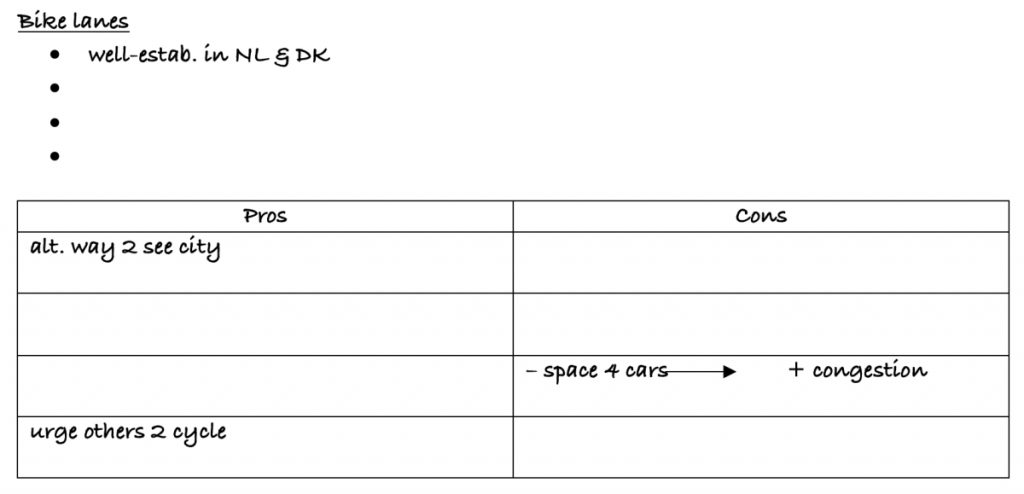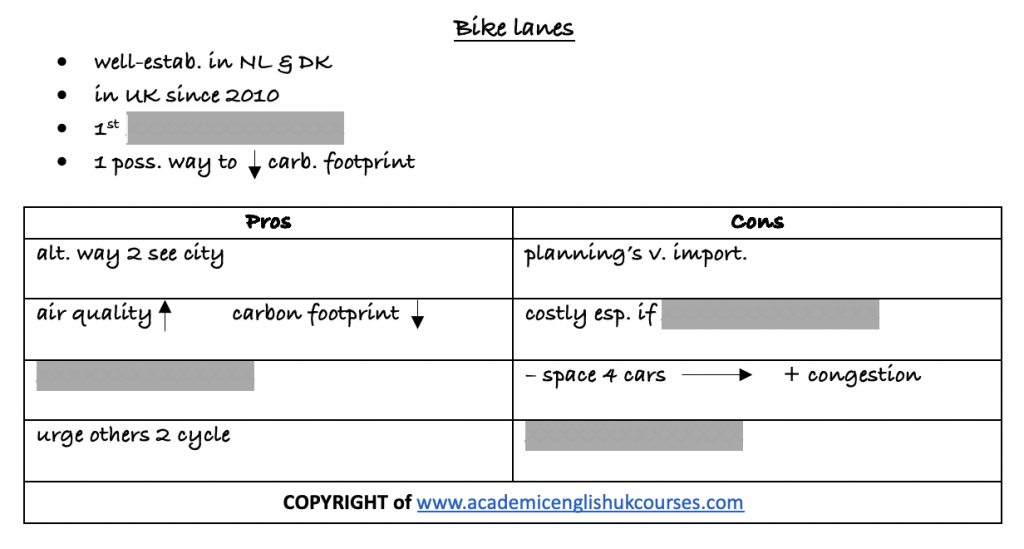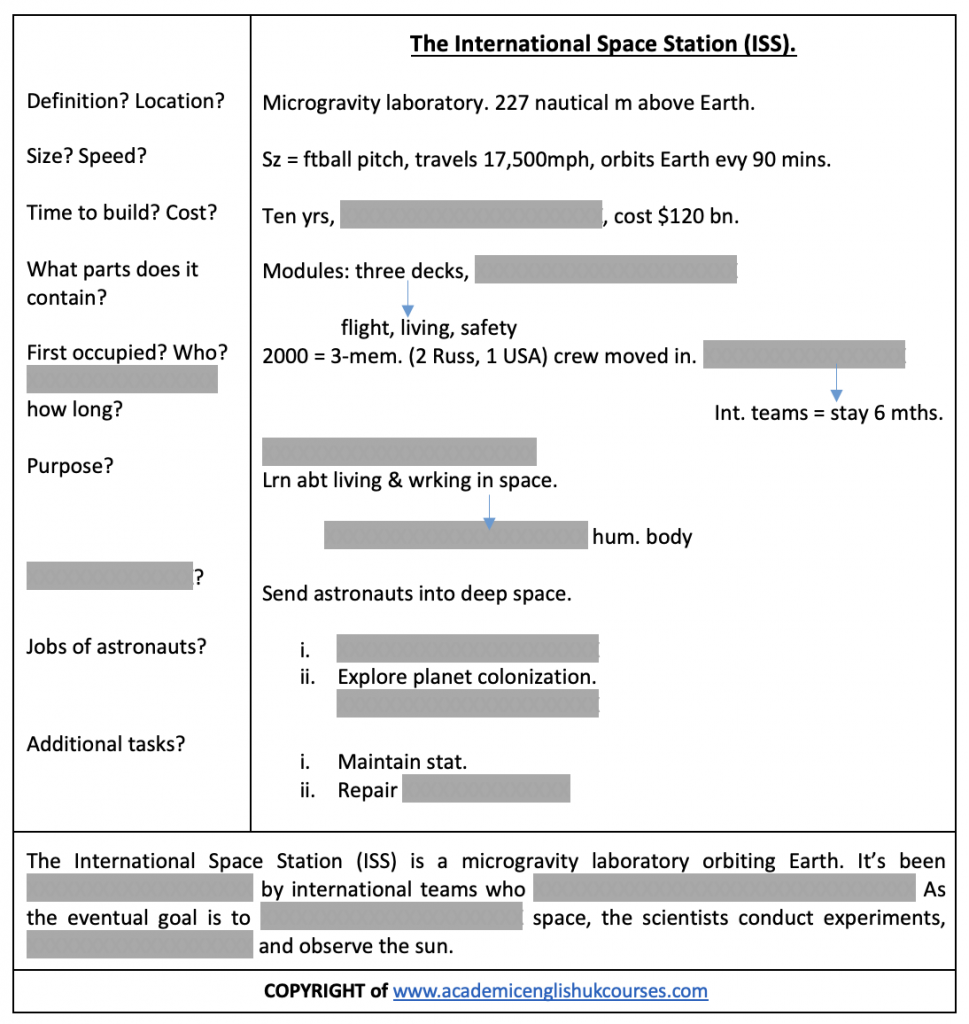Listening Note-taking Skills Course
Course Content:
We’ve released a course that will improve your academic listening note-taking skills by 100%. The course is designed to show you how to take lecture notes effectively and use a range of note-taking strategies. The course includes lots of short listening practice exercises so you will have lots of opportunity to improve your note-taking skills.
Key skills
- English Level B1-C2.
- 12-hour course.
- 4 lessons (2-3 hours each).
- Note-taking strategies.
- Abbreviations & symbols.
- Lecture outlines.
- Cornell notes system.
- Lots of listening practice.
- Sample notes and answers.
- Duration: 30 Days.
So what will learn on the course?
The course is divided into four lessons: Note-taking methods 1-4. Below is what you will do in each lesson.
Note-taking Methods 1
- Practice in using a range of note-taking strategies (e.g., linear, mind map, spider gram, flow chart, timeline).
- 5x micro-lecture listening with note-taking frameworks.
- 2x mini lectures with note-taking frameworks.
- 1x 8-minute lecture using an outline.
- Quiz (16 questions).
Note-taking Methods 2
- Practice in using abbreviations and symbols.
- 4x micro-lecture listenings with note-taking frameworks.
- 2x mini lectures with note-taking frameworks.
- 1x 8-minute lecture using an outline.
- Quiz (18 questions).
Note-taking Methods 3 (general topics)
- An introduction to the Cornell notes system.
- 5x mini lectures using the Cornell notes system.
- 1x 8-minute lecture using the Cornell notes system.
- Quiz (22 questions).
Note-taking Methods 4 (science topics)
- A revision of the Cornell notes system.
- 5x mini lectures using the Cornell notes system.
- 1x 6-minute lecture using Cornell notes System.
- Quiz (15 questions).
Materials
The course is divided into four lessons and each lesson has a downloadable digital booklet.
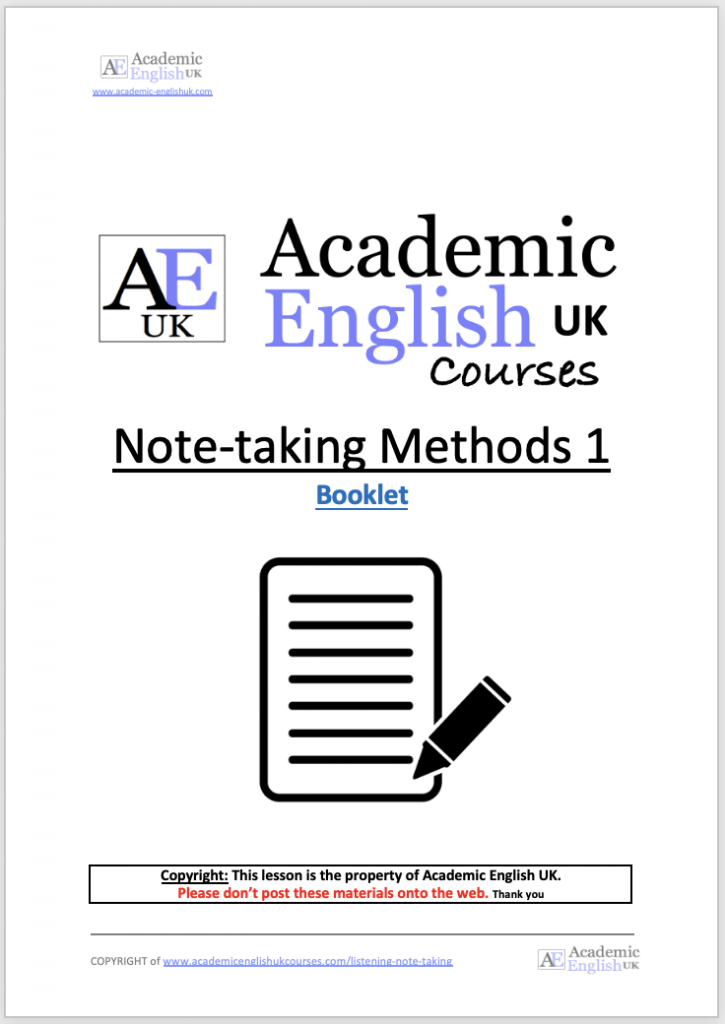
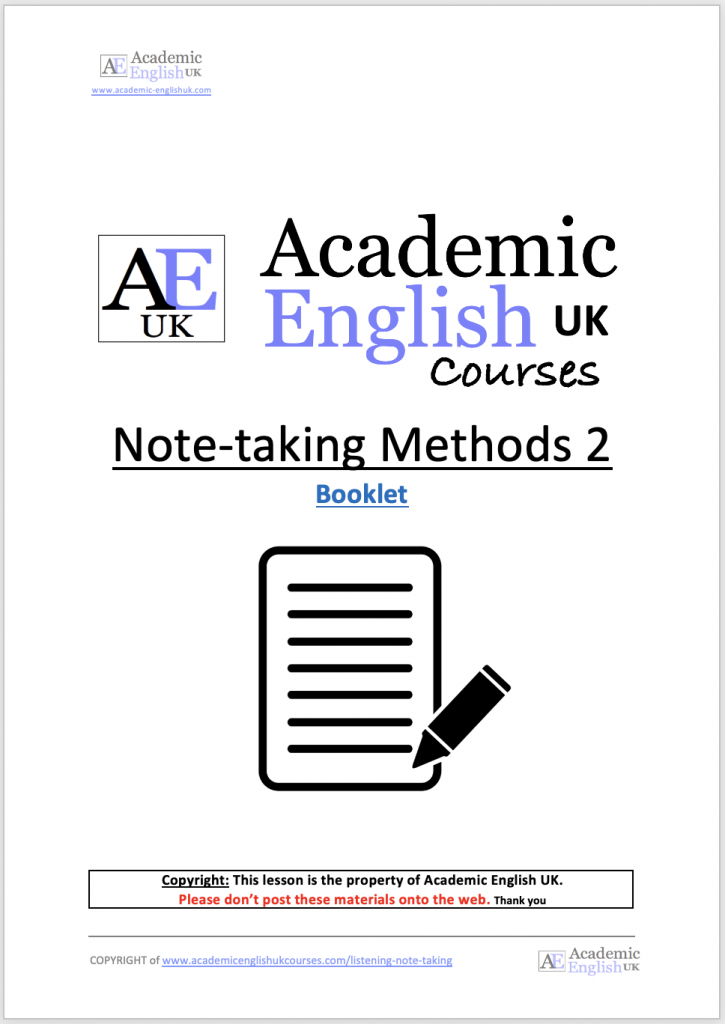
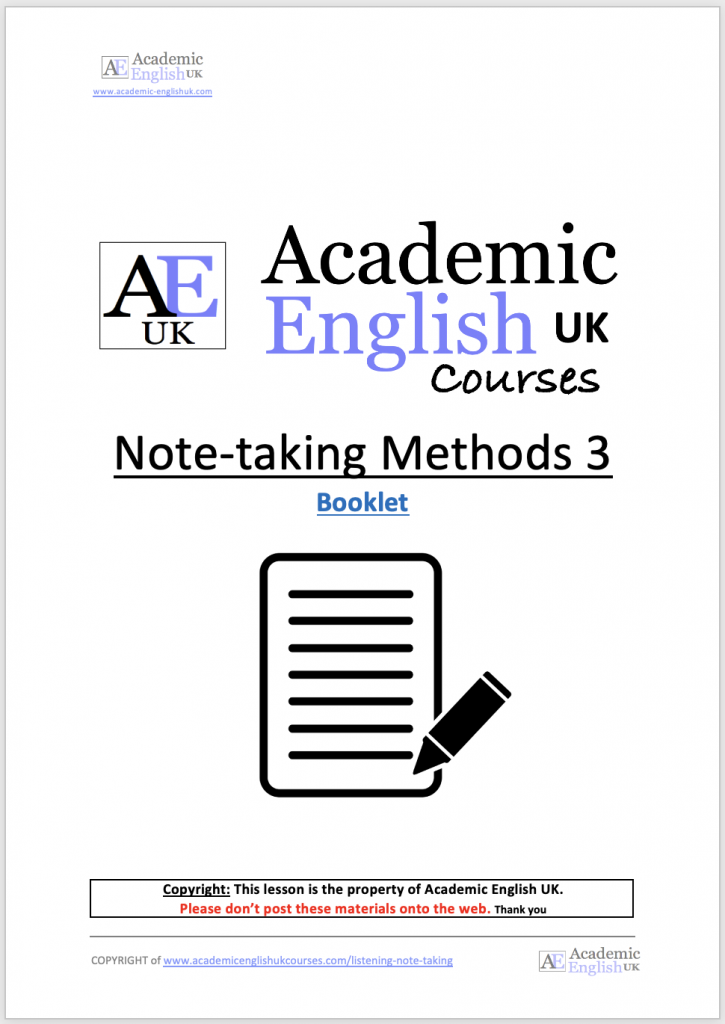

Listening Note-taking Strategies
The course focuses on seven types of note-taking strategies: Flowcharts, spider grams (mind maps), linear style, Cornell notes system, tables, trees and timelines.
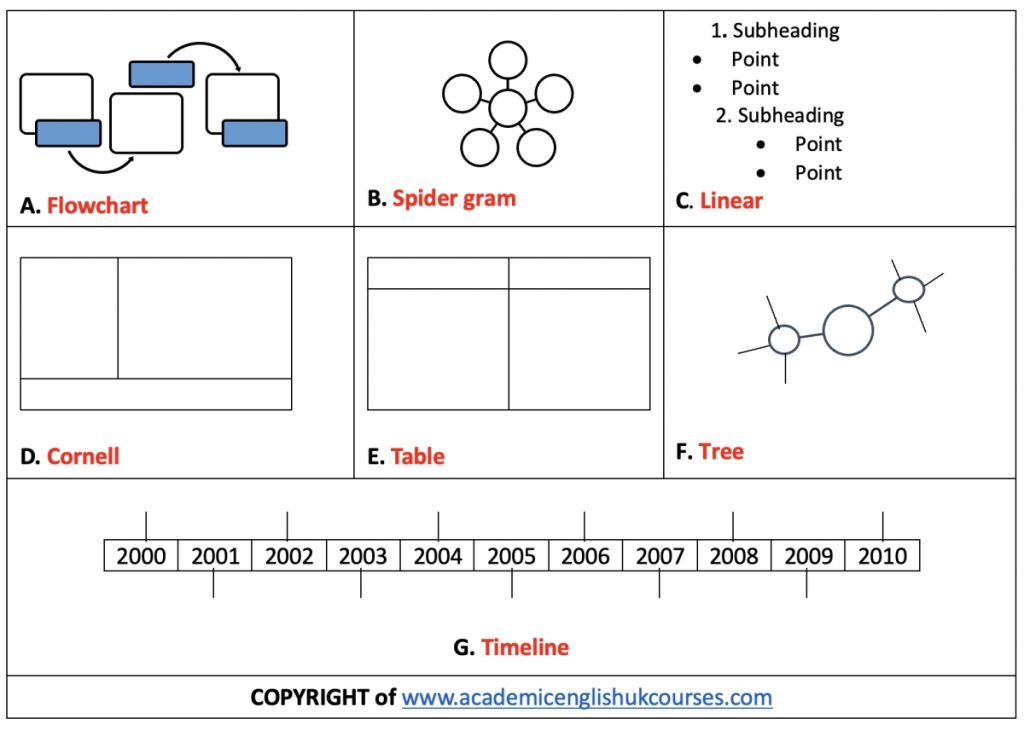
Abbreviations
The course also develops your understanding of using abbreviations and symbols. Many of the sample note-taking answers use a range of abbreviations and symbols so you see them being used naturally.
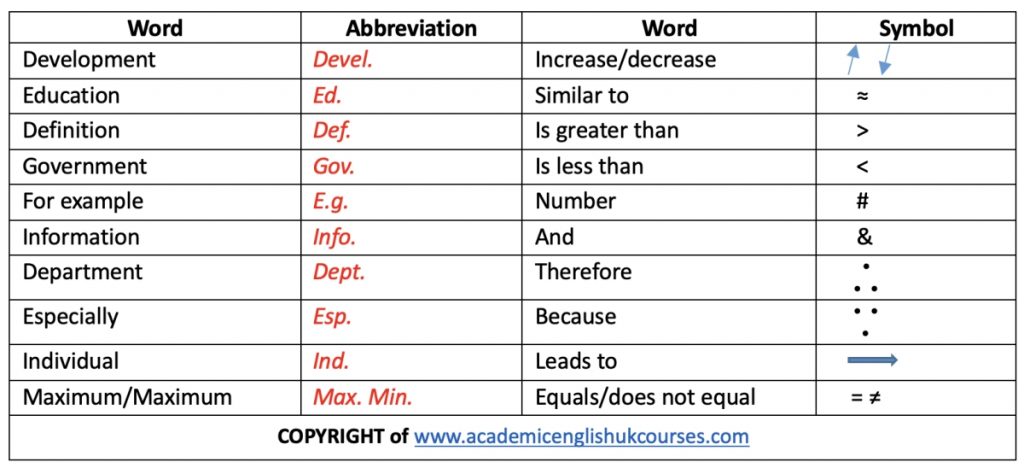
The Listening Exercises
The listening lessons are multi-level. This means you can choose the difficulty of each task.
- VOCABULARY: You have the option to check the key vocabulary before the listening.
- NOTE-TAKING FRAMEWORK: We provide note-taking frameworks in a drop down menu.
- ANSWERS: All answers are provided so you can check your notes.
- TRANSCRIPT: We provide the written text of every recording.
EXAMPLE 1: Note-taking Strategies (taken from Note-taking Methods 1)
Listen to a two-minute lecture on the impacts of bike lanes in cities. Take notes using the linear method and a table. Check the vocabulary before you listen. Then take notes using the linear method and a table and try to use as many abbreviations and symbols as you can. Listen as many times as you like. If you’d like more guidance, then use the note-taking framework in the drop-down menu.
Cornell Notes System
The three key areas:

The five stages in the system:

EXAMPLE 2: Cornell Notes System (taken from Note-taking Methods 4)
Lecture 1: This lecture is about the International Space Station (ISS). Write some notes about these topic questions:
- What do you know about the ISS?
- What do you think the ISS looks like?
- What would you like or dislike about staying on the ISS?
- Do you think the ISS is the first step in space colonisation?
Now listen to the lecture and complete the main column.


